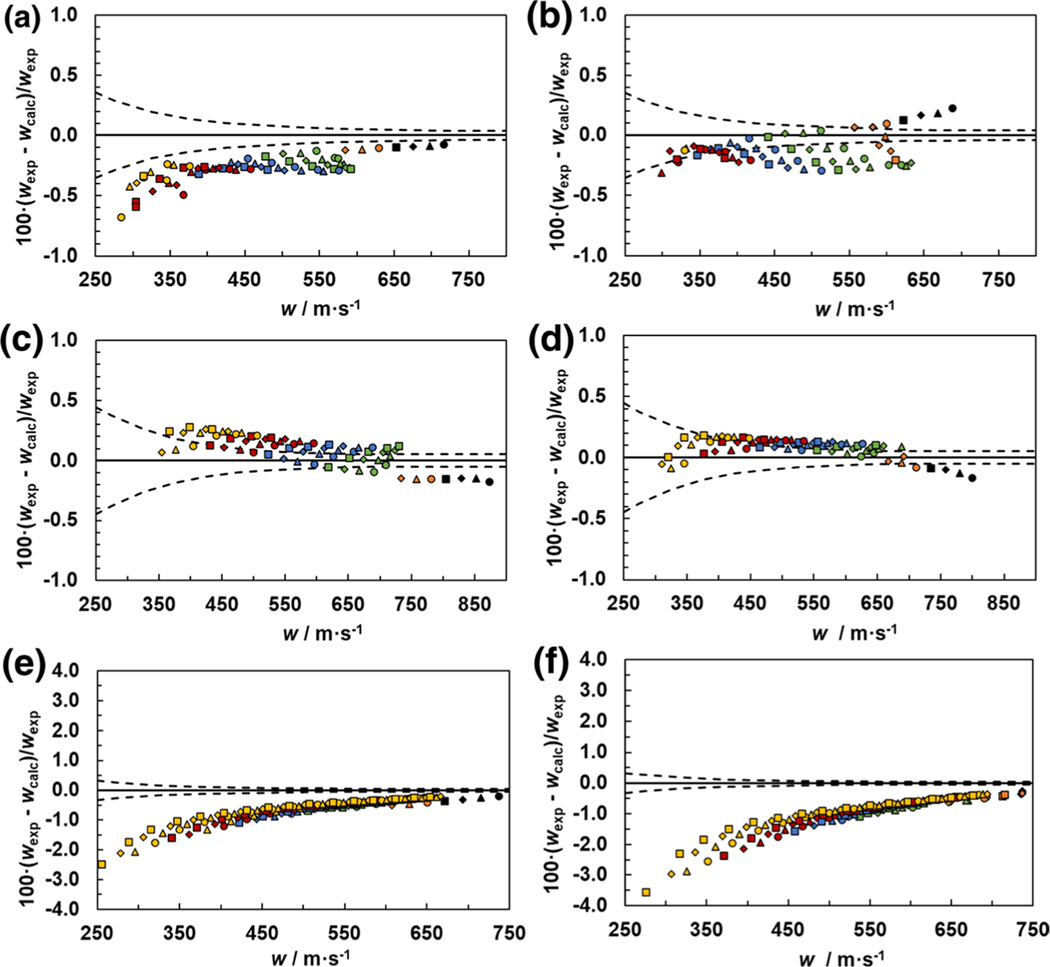Fig. 2.
Deviation graphs comparing experimental speed of sound values, , to speed of sound values calculated using REFPROP [6] mixture models that incorporate pure-fluid EOS [7–11] and fitted binary interaction parameters [12, 13], , as a function of . Dashed lines represent the experimental uncertainty of the speed of sound data as a function of the speed of sound. The systems and molar compositions are (a) R-125/1234yf (0.33351/0.66649), (b) R-125/1234yf (0.66643/0.33357), (c) R-1234yf/152a (0.33342/0.66658), (d) R-1234yf/152a (0.66526/0.33474), (e) R-1234ze(E)/227ea (0.33265/0.66735), and (f) R-1234ze(E)/227ea (0.66803/0.33197). Comparisons are shown at temperatures,  , 230 K;
, 230 K;  , 235 K;
, 235 K;  , 240 K;
, 240 K;  , 245 K;
, 245 K;  , 250 K;
, 250 K;  , 255 K;
, 255 K;  , 260 K;
, 260 K;  , 265 K;
, 265 K;  , 270 K;
, 270 K;  , 275 K;
, 275 K;  , 280 K;
, 280 K;  , 285 K;
, 285 K;  , 290 K;
, 290 K;  , 295 K;
, 295 K;  , 300 K;
, 300 K;  , 305 K;
, 305 K;  , 310 K;
, 310 K;  , 315 K;
, 315 K;  , 320 K;
, 320 K;  , 325 K;
, 325 K;  , 330 K;
, 330 K;  , 335 K;
, 335 K;  , 340 K; and
, 340 K; and  , 345 K (Color figure online)
, 345 K (Color figure online)

